By: Ashish Kumar Mehta | Comments (1) | Related: > Policy Based Management
Problem
You need to periodically ascertain if there are any databases in your production environment which are not in SQL Server 2008 Compatibility Level. In this tip we cover the step by step process for setting up a policy to identify databases that are not in SQL Server 2008 Compatibility Level.
Solution
Database Administrator can use the Policy Based Management (PBM) to identify databases which are not in SQL Server 2008 Compatibility Level. You can follow the below mentioned steps to create and evaluate the policy which can be used to identify all databases which are not in SQL Server 2008 Compatibility Level.
If you are not familiar with Policy Based Management (PBM) then you can start with the following tip: Using Policy-Based Management in SQL Server 2008.
1. Connect to a SQL Server 2008 Instance using SQL Server 2008 Management Studio and expand Management -> Policy Management and then right click Policies and select New Policy... as shown in the snippet below.
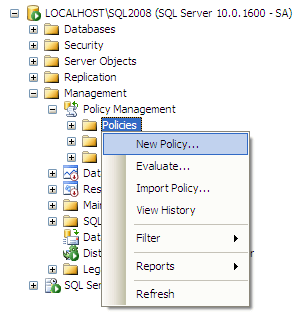
2. In Create New Policy window provide the name of the policy as "Identify Databases Not in SQL Server 2008 Compatibility Level". In Check condition you need to click New condition.... to open up Create New Condition window.
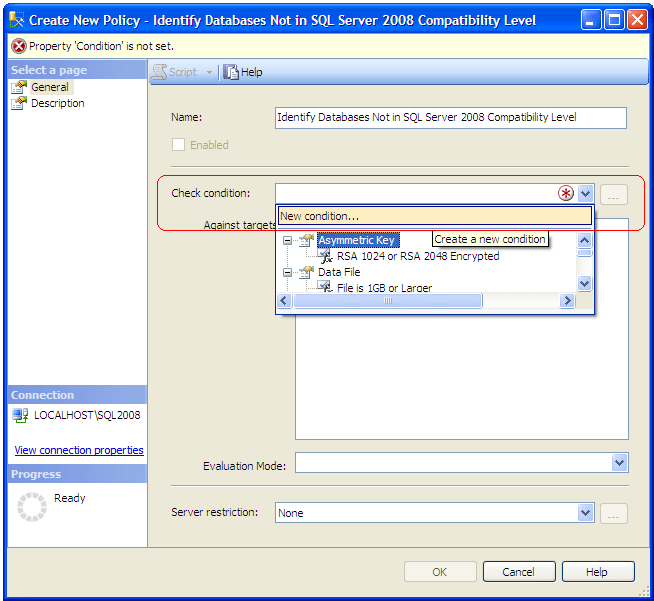
3. In Create New Condition window you need to provide the name of the condition as "Databases Not in SQL Server 2008 Compatibility Level" and then select the Facet "Database". Under Expression select Field value as @CompatibilityLevel and choose operator value as ' = ' and then value as Version100 as shown in the below snippet. Click OK to save the condition and to return to the parent Create New Policy window.
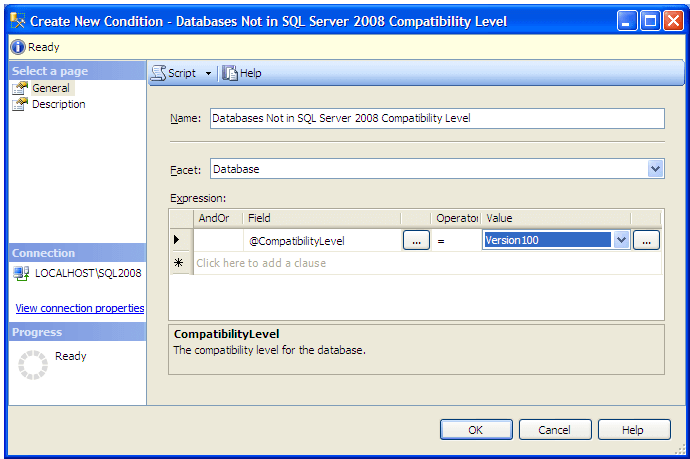
4. In Create New Policy, by default Every Database option under "Against targets" will be checked as shown in the below snippet. Click OK to create the policy.
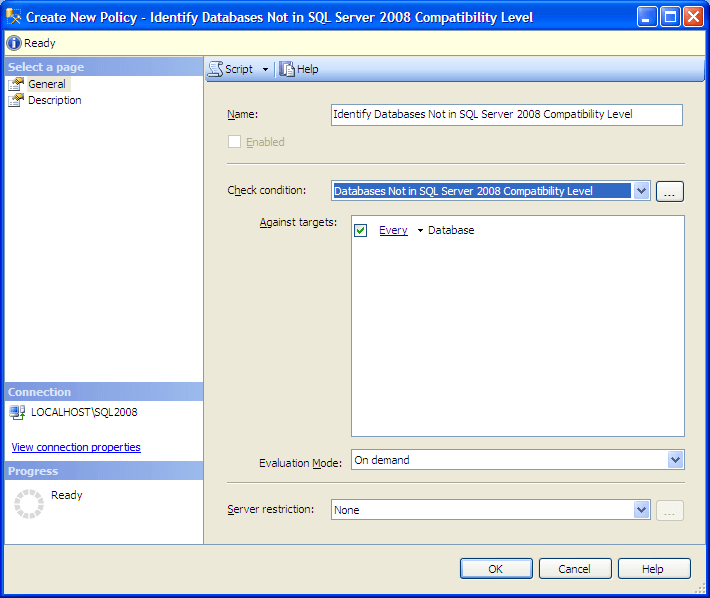
5. Once your policy is created, the next step will be to evaluate the policy. Right click the policy and select the Evaluate option from the drop down list as shown in the below snippet.
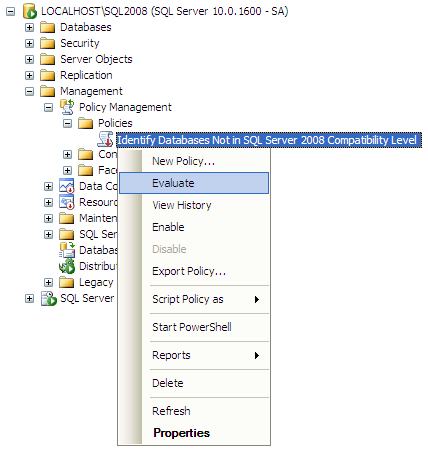
6. The below snippet shows the result set returned by the policy. We can see that for one of the database AdventureWorks the policy has failed. The reason for the failure is the AdventureWorks database was restored on SQL Server 2008 environment from the backup which was taken from a SQL Server 2005 environment.
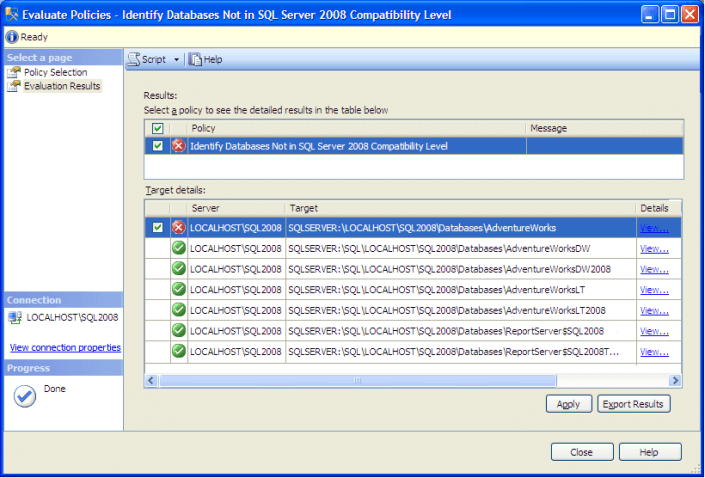
7. When you click a "View..." link under Details, you will be able to see the detailed result for a particular database. For this database the expected value was Version100, however the current compatibility level for the database was Version90 which is that of SQL Server 2005.
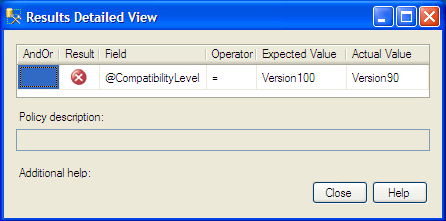
8. If you want to change the compatibility level for the database that is not set to Version100, check the target database and click the Apply button. This action will pop up a Policy Evaluation Warning as shown in the below snippet. Click Yes to change the compatibility level of the database to Version100.

9. Once the policy suggestion is applied you will be able to see the below screen that shows you are in compliance. Click Close to exit.
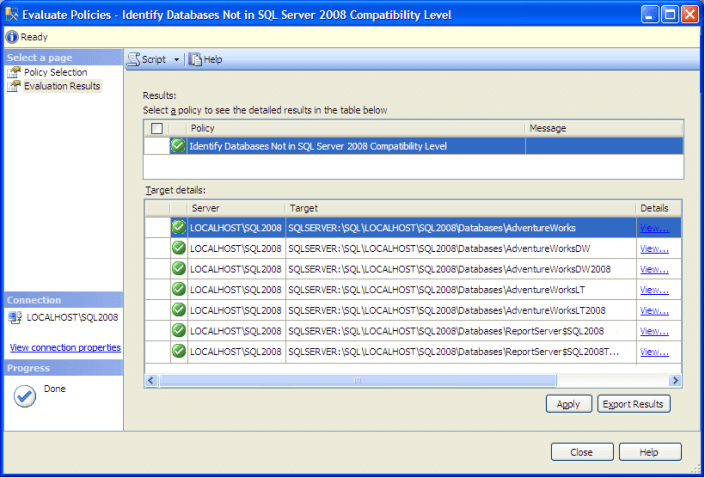
Next Steps
- Review Using Policy-Based Management in SQL Server 2008
- Read more tips on Policy Based Management
About the author
 Ashish Kumar Mehta has been contributing to the MSSQLTips.com community since 2009 with over 60 tips.
Ashish Kumar Mehta has been contributing to the MSSQLTips.com community since 2009 with over 60 tips.This author pledges the content of this article is based on professional experience and not AI generated.
View all my tips






